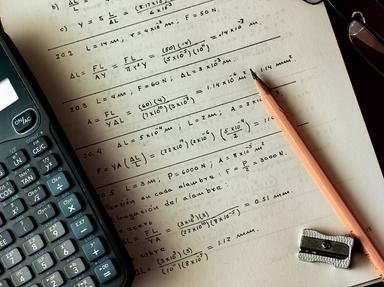Quiz Answer Key and Fun Facts
1. An angle measuring 60 degrees is measured as 62 degrees. What is the percentage error correct to 3 significant figures?
2. In a group of x children, 10 like Maths and 25 like English. 7 like both subjects and 17 like neither. How many children are there in the group? (Hint: If 10 children like Maths, this does not mean ONLY 10 children like Maths.)
3. What is the dividend on £320.80 at 15p per £? (Hint: 1 pound = 100 pence)
4. A box contains 20 fresh fruits: some mangoes and some grapes. If there are 8 more mangoes than grapes, how many mangoes are there?
5. A card is drawn at random from an ordinary pack of playing cards. What is the probability that it is neither a face card nor a black card?
6. A certain number of two digits is decreased by 54 when the digits are interchanged. The tens digit is three times the unit digit. Find the number.
7. What is the value of 64^(2/3)?
8. A pile of 15 boxes is 3 metres high. What is the depth of each box?
9. The area of a face of a cube is 81 cm^2. What is the volume of the cube in cubic centimeters?
10. What is the volume of a cylinder with diameter 296 cm and height 3.054 m (correct to 3 s.f.)?
11. From a stick 2y metres long, I cut a piece of length 4y centimetres. What fraction of the original stick remains?
12. What is the supplement of ([dozen sixes] + 80)degrees?
13. A man needs to sell a cuckoo-clock originally costing £300 to make an exact profit of 10%. How much should he sell it for?
14. If 5/8 of the children in a school are boys and the school consists of 2400 students, how many girls are there?
15. Jack's average mark after 8 results was 54. This dropped to 49 when he received his ninth result which was for Maths. What was his Maths mark?
Source: Author
me07
This quiz was reviewed by FunTrivia editor
CellarDoor before going online.
Any errors found in FunTrivia content are routinely corrected through our feedback system.

